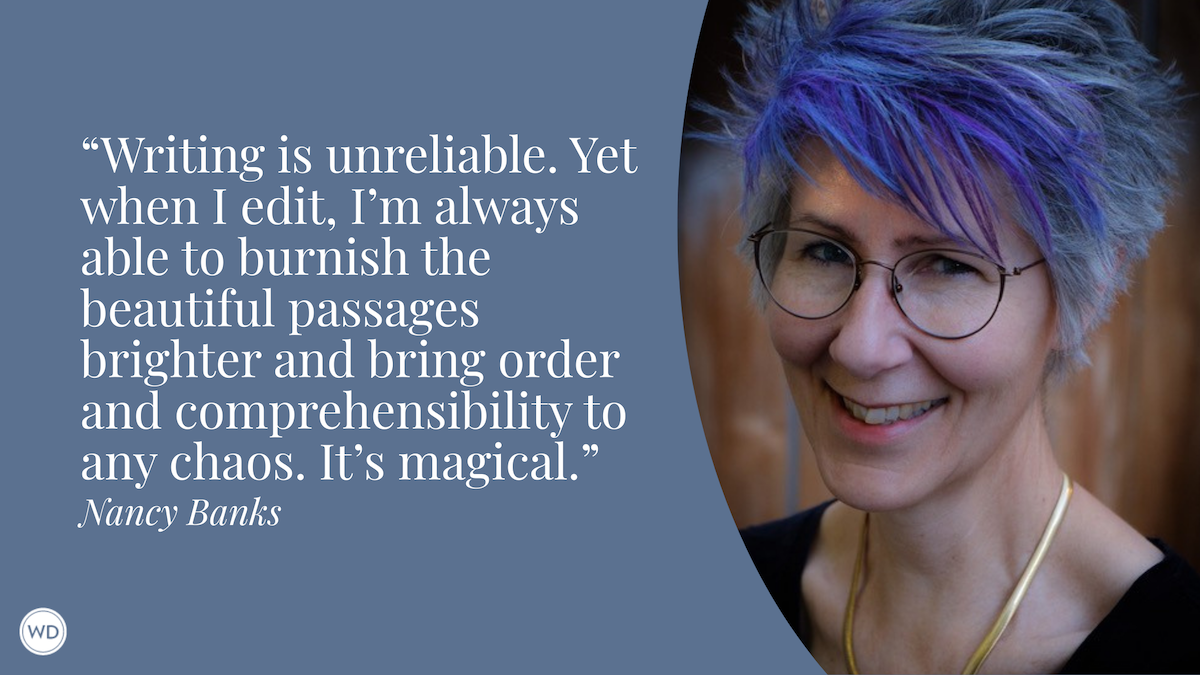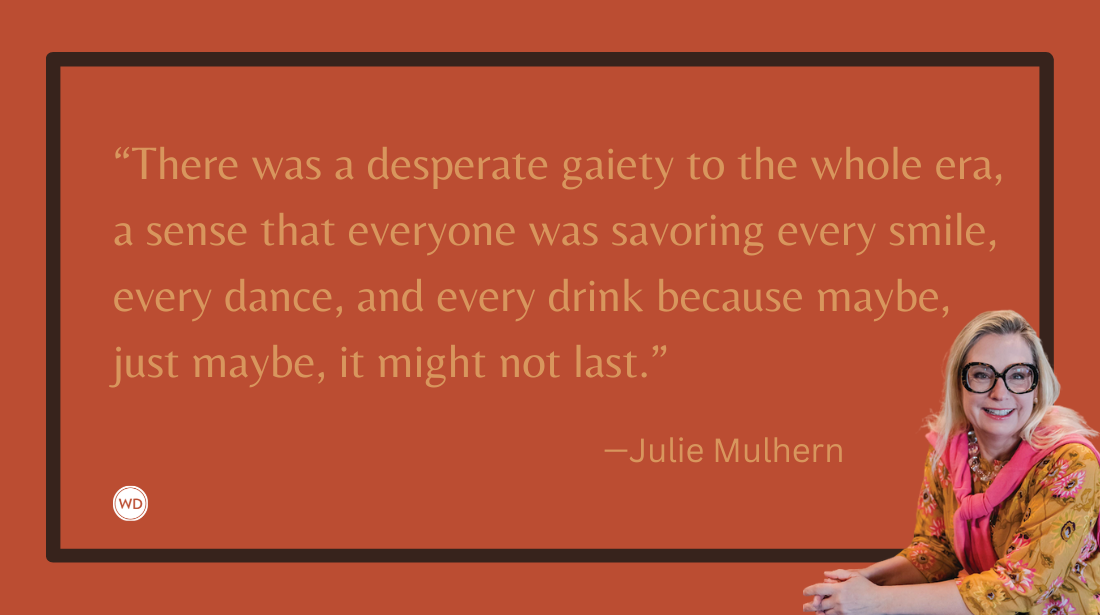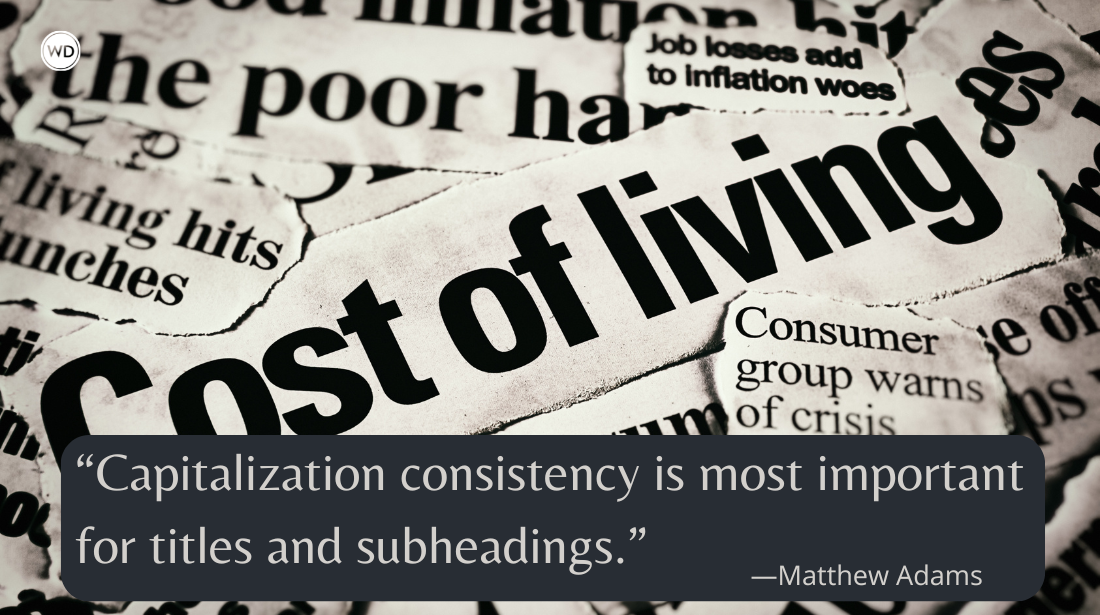How to Develop Any Idea Into a Great Story
Even stories that start with brilliant strokes of inspiration too often fizzle out before we reach The End. Use this four-step method to develop your best ideas to their fullest.
A while ago, I attended an inventors’ club meeting. Some of the members had already launched successful products and were working on more, while others were merely beginners with great ideas. The beginners were commiserating about how hard it is to deal with financing, raw materials, manufacturing, promotion, and all the rest, when one of the experienced inventors suddenly stood up. “Look,” he said impatiently, “ideas are a dime a dozen. It’s the development that puts you over the top. Do what you have to do to make it real and get it to market.”
I was surprised because I’d always thought that a brilliant idea could make you a fortune. But I quickly realized my new friend was right: Idea is just the beginning.
Fiction writers share a lot with those inventors. It’s not hard to get inspired by a great concept, to take it to your table or toolshed or cellar and do some brainstorming, and even to start putting the story on paper—but eventually, many of us lose traction. Why? Because development doesn’t happen on its own. In fact, I’ve come to think that idea development is the No. 1 skill an author should have.
How do great authors develop stunning narratives, break from tradition and advance the form of their fiction? They take whatever basic ideas they've got, then move them away from the typical. No matter your starting point—a love story, buddy tale, mystery, quest—you can do like the great innovators do: Bend it. Amp it. Drive it. Strip it.
Bend. Amp. Drive. Strip.
It’s BADS, baby, it’s BADS.
How to Develop Any Idea Into a Great Story
Bend It
Chuck Palahniuk is on record as saying he drew heavily from The Great Gatsby to create his novel Fight Club. I’ve read both books (multiple times) but would not have perceived that parallel. He said, “Really, what I was writing was just The Great Gatsby updated a little. It was ‘apostolic’ fiction—where a surviving apostle tells the story of his hero. There are two men and a woman. And one man, the hero, is shot to death.” Palahniuk took a traditional love story set in the high society of America’s Roaring ’20s and transformed it into a violent and bloody tale of sexual obsession, cultism and social disruption, set in a rotten world.
He bent the ideas behind Gatsby into something all his own.
IndieBound | Bookshop | Amazon
[WD uses affiliate links.]
The next time you get a great idea for a story, don’t stop there. Bend your initial concept, making it more unique—and more powerful—with every turn:
• Get out of your head and into your pelvis. Give your characters inner yearnings (sexual or otherwise) that they don’t understand and can’t deal with cognitively. Palahniuk took his idea for an apostolic main character and gave him an unnamable urge, a gland-level longing that drives him to pretend to be a cancer patient and participate in support groups where hugging and crying are not only OK but expected. Breaking the taboo against exploiting nonexistent pain does more than give the character relief: It moves the story forward in huge leaps.
Brainstorm who your own characters might be by starting with their motivations. Let’s say you’ve come up with the idea that your main character is an insomniac who needs chocolate to fall asleep. Take that urge and bend it into something else that would be totally disquieting to anybody but your protagonist. Wouldn’t it be more compelling if she has to, say, shoplift an expensive item precisely one hour before bedtime?
• Break away from familiar parameters. Most authors write characters who have backgrounds similar to their own, at least with respect to class, education and money. Throw that out. Write billionaires, bums, addicts, the hopeless, the heroic. Give them crappy, selfish habits, resentments, grudges. Mix traits. Make feral creatures out of urban sophisticates and urban sophisticates out of feral creatures.
• Add insanity. The key to making a character believably and compellingly crazy is to give him a way to rationalize his behavior, from the slightly weird to the outrageous. Is your character actually nuts, or is there something else going on? How can anybody tell? Crazy characters wind up needing a lot of resources to keep them out of trouble—and can have a major impact on everybody else. Have fun with that.
• Question Convention. Use existential questions to bend the life lessons your readers think they’ve already learned: What is suffering? What is pleasure? What is a waste? What is worthwhile? Can something be both, or neither? Invite your characters to reject common wisdom and look for answers themselves.
Amp It
Brief Encounter is a British film adapted from Nöel Coward’s play Still Life. It’s the story of two quiet people who meet and fall in love in spite of being married to others, but then, conscience-stricken, break off the relationship before it really gets going. The small, exquisite tragedy resonated with the genteel, romantic codes of conduct valued in prewar England.
But then along comes Tennessee Williams with his play Cat on a Hot Tin Roof, a love story that has similar themes at its core but rips us away from any semblance of civilization. Could Williams ever amp drama! For one thing, he knew that a story about noble ideals wouldn’t cut it anymore. Setting his play in the emotionally brutal mélange of the postwar American South, he slashed into the secret marrow of his protagonists and antagonists alike, exposing the weaknesses and delusions that bind people together on the surface while tearing them apart below decks.
Take the essence of your story, and amp it:
• Add characters and pile on the emotion. Playwrights used to limit the number of characters in their stories, not wanting to overcrowd the stage. But when Williams crams six or eight people onto the scene at once and sets them all at one another’s throats, we get a chance to feel their emotional claustrophobia and unwanted interdependence. Amp up your action by adding cunning, vindictiveness, jealousy, fear of exposure, stupidity, even death.
• Make even minor characters fierce and elemental. Consider Mae and Gooper’s five children in Cat on a Hot Tin Roof, who lesser authors would describe (boringly) as “brats” and leave offstage. Before you even see them, you witness their havoc (ruining Maggie’s dress) and listen to Maggie call them “no-neck monsters.” You don’t even have to meet them to fear them. Then Williams gives them stage time, every second of which makes you squirm with discomfort.
• Expose internal bleeding. The deepest, most painful wounds are the invisible ones humans inflict on one another and ourselves in a hundred ways: betrayal, selfishness, abandonment. Strive to write characters who feel vulnerable to pain, whose secrets are so close to the surface that they can’t afford to be polite. Put in a truth-teller and watch the inner flesh rip and sizzle.
• Create blood ties. Kinship is story gold. Take your pick of, and take your time with, its darker aspects: scapegoating, favoritism, jealousy. A blood link can instantly heighten any conflict. Why? Because kinship is the one thing in life you can’t change or walk away from. Make your characters learn this the hard way.
Drive It
Many great modern stories spring from the same seeds as old folk tales. The subjugation of young women, for instance, is not only one of the oldest oppressions, it’s one of the most pernicious—hence, it still resonates with audiences of all sorts. We first meet Cinderella in the scullery, a slave to the rough demands of her stepmother and older stepsisters. When Cinderella tries to take some initiative to improve her situation, she’s squelched and punished. (I might add that the step-relationship is especially lush ground for storytellers, given the schizophrenic strength of the half-kin, half-stranger link.)
Margaret Atwood, in her landmark dystopian novel The Handmaid’s Tale, steers the Cinderella archetype away from any home whatsoever and from any relationships, besides. She multiplies Cinderella a thousand times, and all the Cinderellas are kept alive for the sole asset they possess that can’t be synthesized (at least, not yet!): their fertile wombs. Their purpose is to procreate a society that would be better off dead. And there are no handsome princes to come along and change anything.
Atwood drove Cinderella to a point almost—but not quite—beyond recognition. And that’s the power.
You, too, can make gut-wrenching magic out of your fiction by driving your tale to a conclusion further than you ever thought it could go:
• Start at the crux of your premise and hit the gas. Agents and editors often tell new writers, “Don’t start at the beginning, start in the middle,” which usually means, “Don’t waste pages setting up the core of your story.” Wise advice. Try starting at your knottiest point, and then drive it forward using the same techniques that got your concept there. Everybody’s bloody and panting, everybody’s heart is broken, everybody’s hanging on by their fingernails. Now what? Let the story begin!
• Make it bigger than the individual. How would an organization intimidate and subjugate? Make it legal; go step by small step. Lawlessness isn’t as frightening as a breakdown of the social order with the wrong people in charge. An organization can be as small as a truck stop, a fraternity house, or a bridal party. Let everything seem normal at first, and then gradually let things devolve, deteriorate, go wrong. Make your characters passengers trapped on a train that’s barreling toward disaster.
• Add the complicity of a victim. Polite, politically correct society isn’t at all comfortable with a victim being complicit in his or her own oppression. Good! The discomfort comes from the fact that everybody knows but doesn’t want to know that such perversion of the human spirit exists; it’s real because self-deceit is real. Break the taboo and use it to make your tale breathtaking, like a ship breaking apart on a reef.
• Put in an impossible choice. The women in Atwood’s novel live an impossible choice every day: Do they go along, or rebel? To go along is to destroy yourself from within; to rebel is to invite certain destruction from without. An impossible choice can confront someone who’s being blackmailed or someone who absolutely must have two conflicting things or any number of other possibilities. And it can steer your story in new directions like nothing else.
Strip It
War has been the seed of innumerable creative works. In developing War and Peace, Leo Tolstoy put in everything he could think of because war is so big. To represent the French invasion of Russia and the accompanying Napoleonic era, he wrote an epic that followed dozens of characters. The sheer, pounding weight of detail in War and Peace helps us understand the impact of war on individuals and the institutions they thought to be unshakable.
But Ernest Hemingway, a young man reeling from his own experiences in World War I, stripped away everything he could think of because war is as small as one man. Confronted with the realities of war, he wrote what came to him, then stripped it and sanded it until nothing but hard, bright pieces were left. The result, In Our Time, is a collection of vignettes and short stories that evokes the immediate horror and lingering pain of that most awful of human activities.
When it starts to seem as if no number of words can truly represent the reality of anything, explore what might happen if you strip your idea down to allow the miniature to suggest the infinite:
• Adopt a minimalist attitude. If you’ve taken to heart my BAD advice (!), you might have a notebook or file with ideas, hunks of story, character notes, lists of heart-clutching moments you want to put in. Great material! Now, instead of trying to develop all that further by squeezing out more, look closely at what you have. Sort through it for gems, or what could become gems with some tough love. Look for quality over quantity. Continue to apply this mentality throughout your writing and revision.
• Convey emotion through action, not description. Inexperienced storytellers often try—alas, unsuccessfully—to do what Tolstoy did well: to not only show what happens, but tell in deep, ruminative detail how everybody feels about it. To Siberia with that! Do like Papa Hemingway: When Joe’s dad in “My Old Man” gets crushed to death on the horse track, Hemingway simply lets Joe tell us that the cops held him back, and what his father’s dead face looked like, and that it was pretty hard to stop crying right then. You too can present life-and-death emotion without saying a word about it. Adopting this approach from the outset of your idea development can save you a lot of writing and rewriting later.
• Use small particulars to bring big things to life. A mushroom cloud, or a burned, crying baby? A wedding with a cast of thousands, or the intimate taste of a lover? A travelogue, or the feel of acceleration down a mountain road? It’s not too early to start thinking about your details. Be choosy. What makes your heart quicken? Those glancing moments may offer up all the description you need.
When you implement these techniques, don’t bear down hard on any one; take a light, relaxed approach and allow idea to build on idea. If you do that, your innate creativity will take over. It knows what it’s doing! At times when you’re really rolling, your ideas will seem to develop themselves; they’ll pop brighter and bite deeper.
And like the best inventors who combine brilliant ideas with the guts and drive to make them reality, you won’t be stuck drumming your fingers on the drafting table. You’ll be producing well-developed stories with the optimum chance of success.
Elizabeth Sims is the bestselling author of seven popular novels in two series, including The Rita Farmer Mysteries and The Lillian Byrd Crime series. She's also the author of the excellent resource for writers, You've Got a Book in You: A Stress-Free Guide to Writing the Book of Your Dreams, published by Writer's Digest Books.









